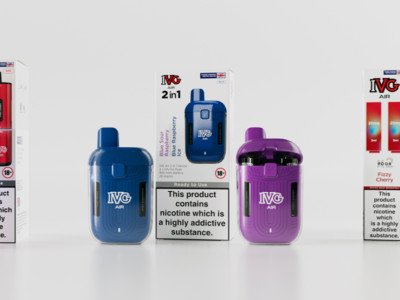There was a discussion on the POTV forum last week about the news concerning a study that measured the damage to DNA from smoking a pack of cigarettes a day. It was estimated that a pack-a-day smoker causes a wide range of mutations in cells in various parts of the body during the course of a year. The research suggests that each cell sees mutations to DNA at the level of 150 in the lungs, 97 in the larynx, 39 in the pharynx, 23 in the mouth, 18 in the bladder and 6 in the liver. The problem with this is that DNA damage is permanent and that this damage can lead to cancer developing.
While most of us who read POTV have given up smoking we will have sustained damage at cell level that could lead to cancers developing in the future. By giving up smoking you are stopping new mutations occurring from smoking (they do occur naturally though, but to a lesser extent) and you are reducing the chances of one of these mutations developing into a tumour - simply by having less of them. But having smoked you will have already developed some DNA mutations. There is still the chance that your smoking habit will result in cancer many years after you packed it in.
The test that the scientists from BAT used to compare the cigarette smoke to vapour (from a Vype ePen) is called the Ames test - it is a widely employed method that uses bacteria to test whether a given chemical can cause mutations in the DNA of the test organism.. This was a reduced Ames test, the standard test involves testing against five strains of bacteria where this study only looked at two, although both strains are effective at screening 90-95% of potential mutagens according to the Medical Xpress website. The two strains used were Salmonella typhimurium strains TA98 and TA100 – both have been used widely in assessing tobacco smoke but never before used with fresh ecig vapour.
To conduct the test, particles from cigarette smoke or vapour was trapped on filter pads which were then washed with a solvent to produce a stock solution. This solution was then diluted at different amounts to create different concentrations of solution for testing. The bacteria were then exposed to the same concentrations of the smoke or vapour extract and the results could then be measured and compared. They also tested the bacteria against freshly generated smoke or vapour from the ePen.
As you would expect, the higher the concentration of the solution of smoke extract, the higher the levels of mutation that were observed. At the higher end of the concentration there was no discernible difference in the number of mutations, the solution was so toxic that the number of bacteria had thinned.
Changes in the concentration amount of the ecig solution showed no effect on the bacteria, even at the highest concentration there was no thinning of the number of bacteria and the tests “did not demonstrate any mutagenic activity under the same test conditions.”
When looking at the aerosol rather than the extract solution the results were equally as positive. The two strains were exposed to smoke for 24 minutes, this was “enough to elicit a mutagenic response in both TA98 and TA100 at the lowest smoke dilution”.
Ecigarette aerosol however was extended to 3 hours of treatment - and even with this much longer time frame the scientists found that the results were not significantly different to the strains treated only with air.
Extensive control tests were also run to further validate the results. If you are of a slightly technical leaning and are interested in reading the whole of the paper it can be found here:
http://www.sciencedirect.com/science/article/pii/S1383571816301711
You can see how thorough the investigation was in terms of control tests, it is impressive in its attention to detail.
Whilst the results of this test are hugely positive we do still need to see more tests over a wider spectrum of strains and also over a greater number of devices and eliquids before any conclusions are drawn into how less likely vaping is lead to the development of cancer, but this is a great start. The race should be on now by organisations such as BAT, after all they have the money and the know-how, to ensure that more extensive tests are completed and that the results are shared. We just hope that this is done in time to stop the WHO making any more stupid decisions that seem to be based on bad science and probable financial incentives. Although sadly it seems likely come too late to have any effect at COP7 as UKTAS has slammed the WHO’s recent report on ecigarettes.
Dave Junglist
Journalist at POTVDave Junglist is co-owner of Planet of the Vapes and has been vaping since 2015. He spent his early years with his head in a bass bin and was a very committed and experienced smoker. He had his first cigarette at the age of 13 and just knew it was for him. He did stop briefly with the aid of patches but reverted quickly and became a ‘secret’ smoker, working hard to keep his weak will from the attention of his family. Vaping made an honest man of him and for this he is forever thankful. He has been involved in websites since completing a degree in Environmental Science in the late nineties. At that time there was pretty much no contact with computers but on joining the regular workforce and deciding that the world-wide-web was the future he blagged his first job as a web designer and never looked back. As you would expect from a junglist, Dave likes his beats and is most comfortable when the bass is wobbly.








